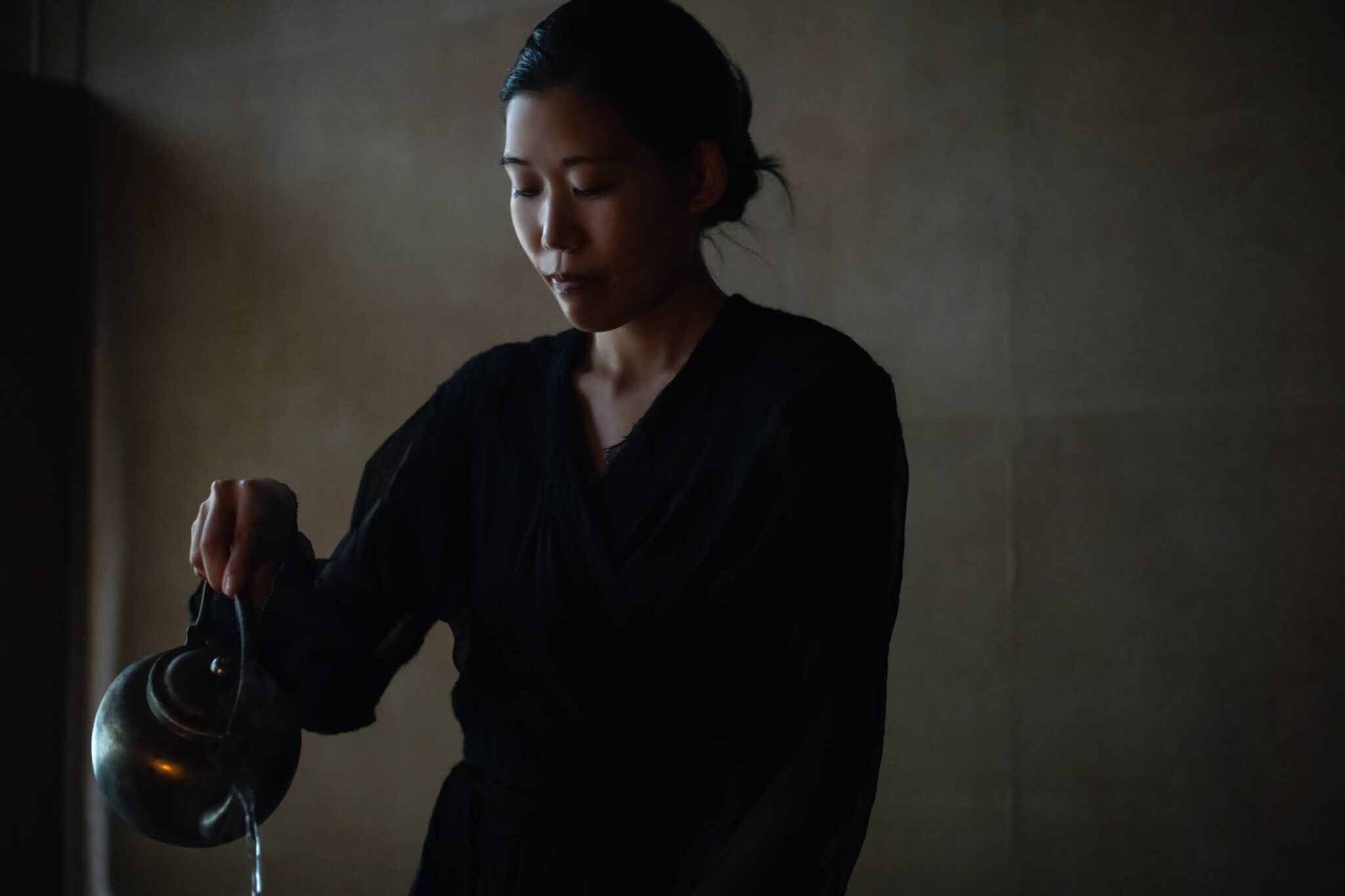When tea is served, there is the first pot, then more hot water is added to serve the second and third pot. Each pot mysteriously creates a rich experience for the people sharing the flavors of the moment. As the body gradually warms up, people’s minds relax and conversations begin to flow.
We learned of a tea house that provides an experience that “slowly melts the heart and mind.” We visited Miho Mizoguchi, who runs the tea house Kokonotu in Asakusa Torigoe in Tokyo.
“I believe the raison d’etre of my shop is to encompass the seasons for the customers. If I can provide the ‘sustenance’ for that, it would make me very happy.”
We visited Mizoguchi to experience the Japanese tea confectionery she calls ryoka, or “food sweets.”
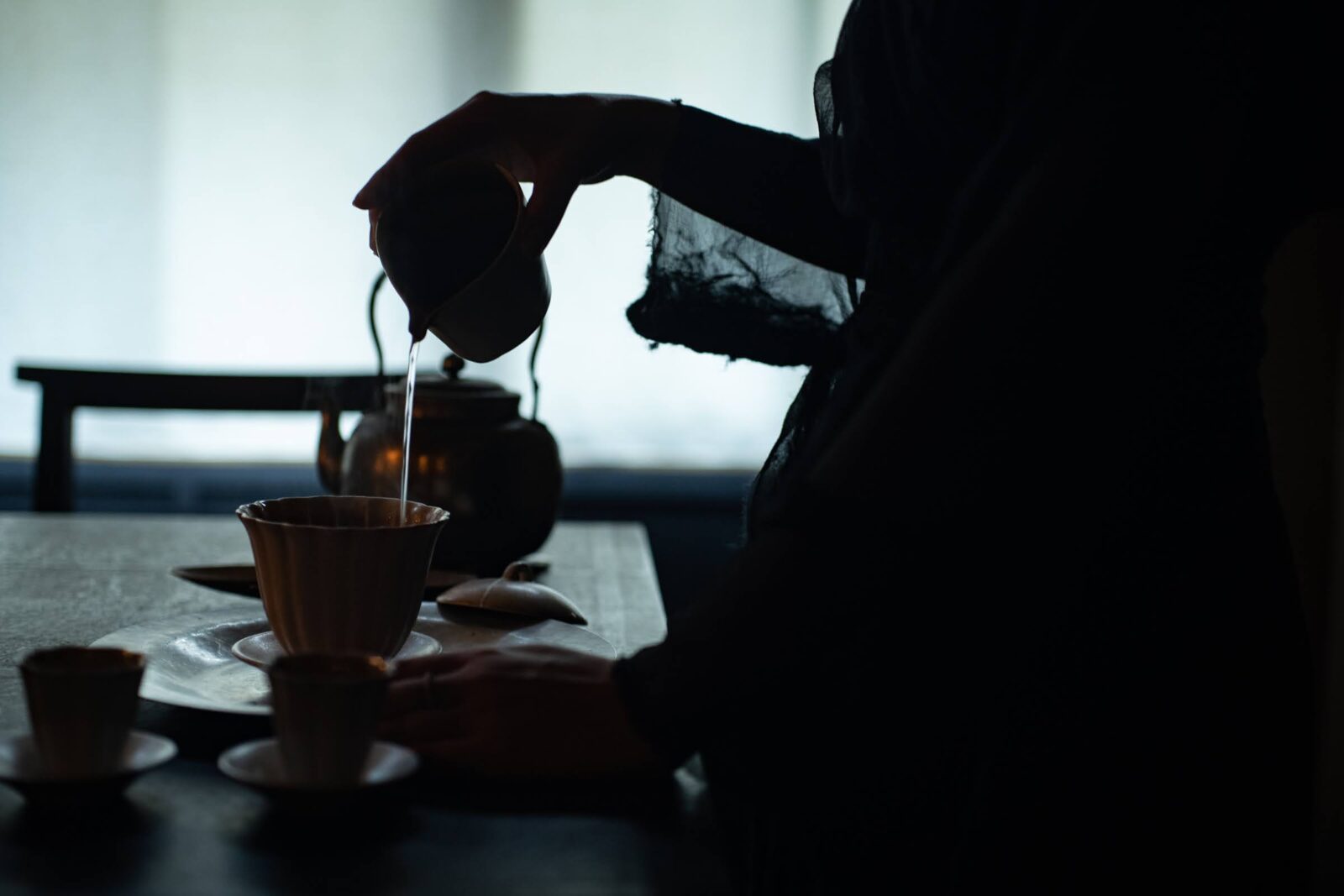
Boiling water, the aroma of tea leaves, under dim lights
We arrived at a common traditional Japanese house in downtown Tokyo. Inside the house was a dimly lit, quiet space.
It took some time for our eyes to adjust to the dark candle lit room, and slowly we could see that we were indeed in a tea house.
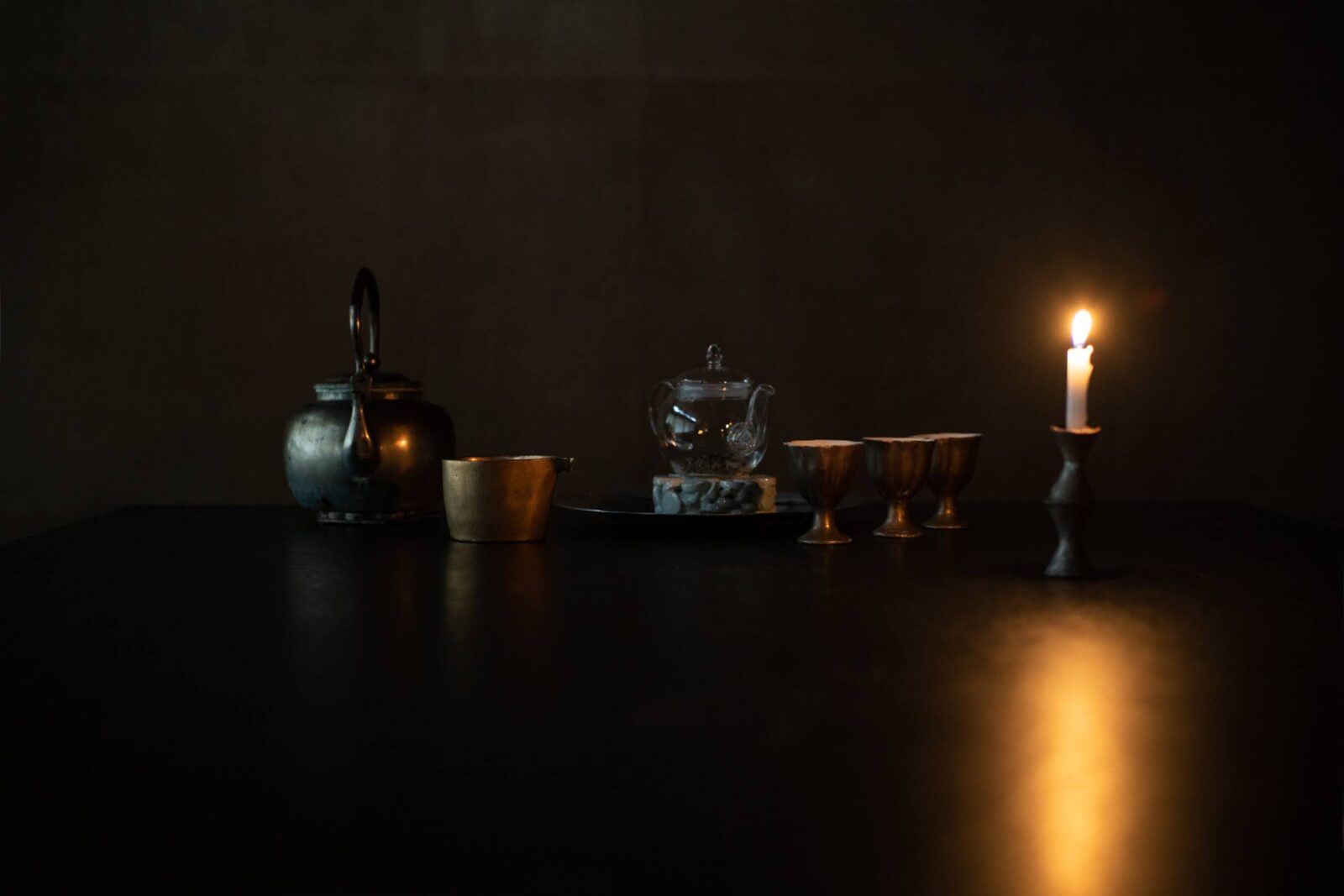
The tea house Kokonotu serves two hour courses which consists of five dishes of ryoka, which combine both culinary and confectionery elements as well as a tea to accompany each dish.
The courses are advertised on their website and Instagram account. When they post a notice for open reservations at 8 a.m,, it fills up quickly. Many of their reservations are for single customers who enjoy the experience alone.
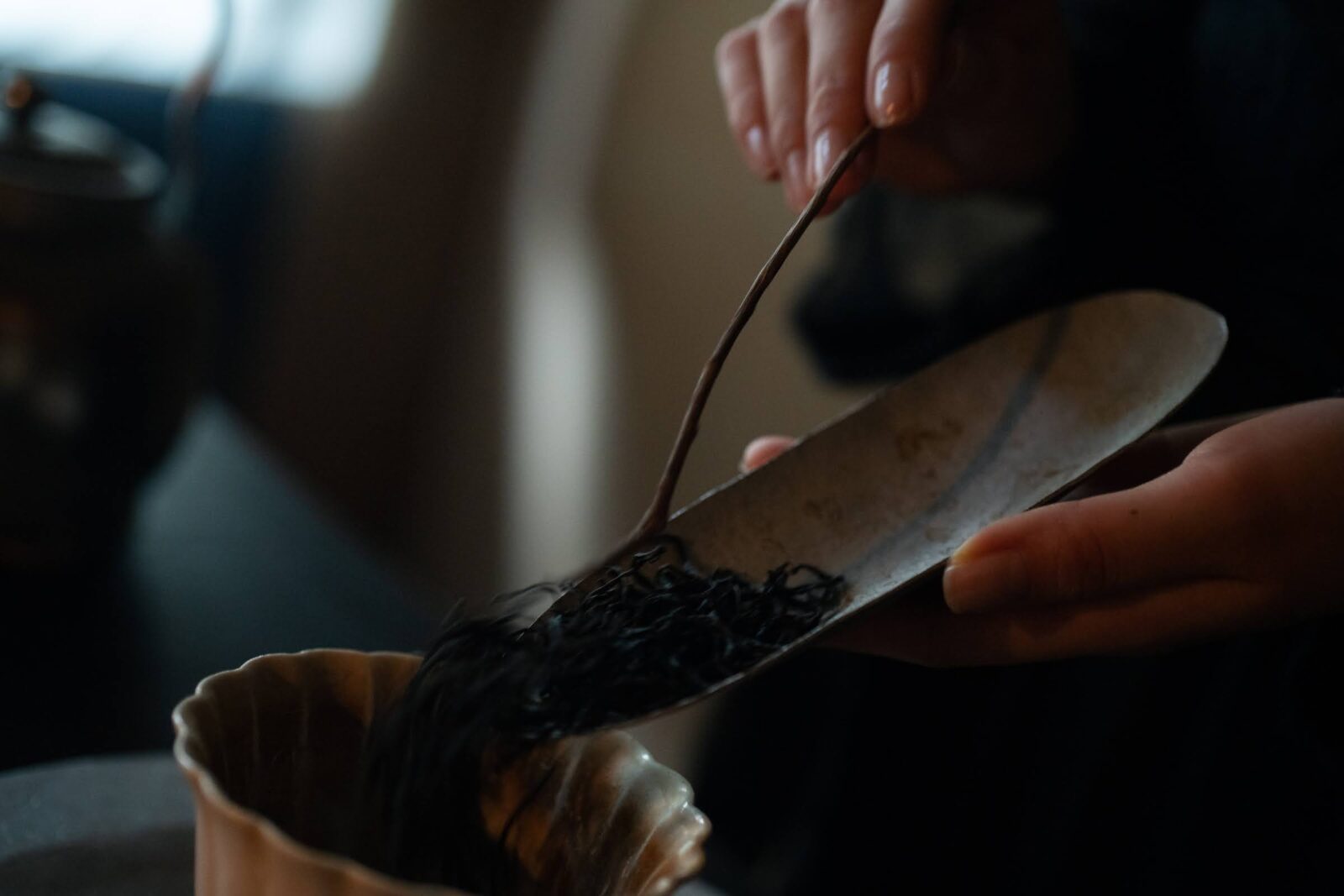
The experience at the tea house Kokonotu begins by listening to Mizoguchi pouring boiling water into the tea pot and breathing in the aroma of the tea leaves.
The tea spoon that Mizoguchi was using that day was made from a nameless stick she picked up on a walking path in Okinawa. It was thin, but it bent with ease to connect her hand with the tea leaves and blended well with her other tools.
Mizoguchi laughs as she talks about how she carried the stick in her hand on her flight home to Tokyo from Okinawa so it would not break.
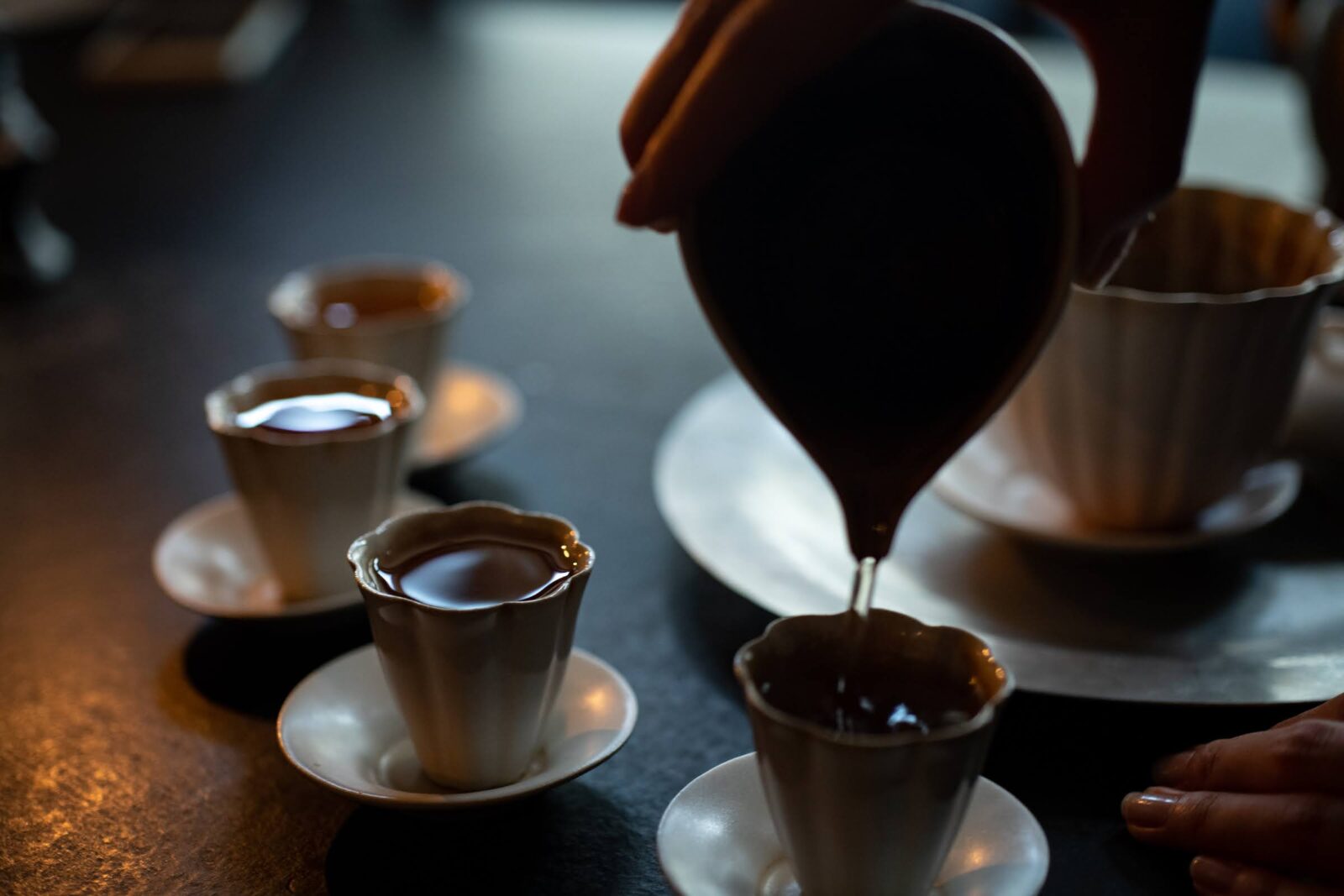
The first tea we were served was a black tea called Benifuuki from a plantation in Okinawa that is said to be the southernmost tea plantation in Japan. It is produced by Kanigawa Tea, an organic tea producer in Nago City with a history of over 60 years.
Okinawa is located very close to Taiwan and the season for new tea leaves arrives earlier than the main islands of Japan. Mizoguchi shares that, much like Taiwanese tea, this tea has a strong sweet flavor and absolutely no bitterness.
“The tea leaves are chewed by insects called ‘Unka,’ which stimulates fermentation and makes the sweet aroma and rich flavor. In Japan, black tea runs out of flavor after about three pots, but perhaps the sun and soil of Okinawa makes tea that lasts longer like Taiwanese and Chinese teas.”
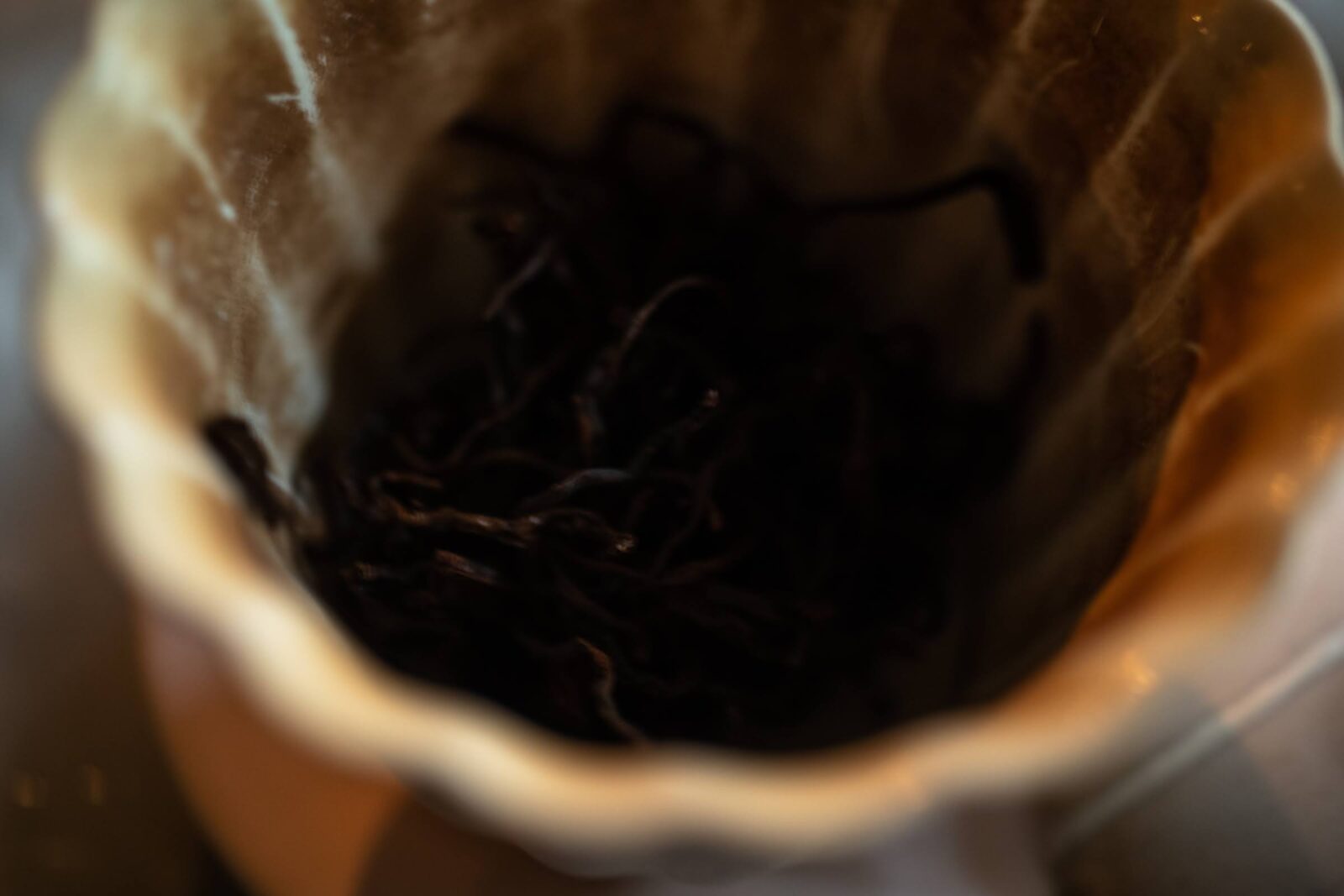
Even in the dim lighting, one can see the tea stains on her utensils from being so well-used. She says that it represents “the months and years that have passed.”
“Most of the tea utensils I use are made by ceramic artist Masanobu Ando. For example, this single spout is so well made, it doesn’t spill a single drop.”
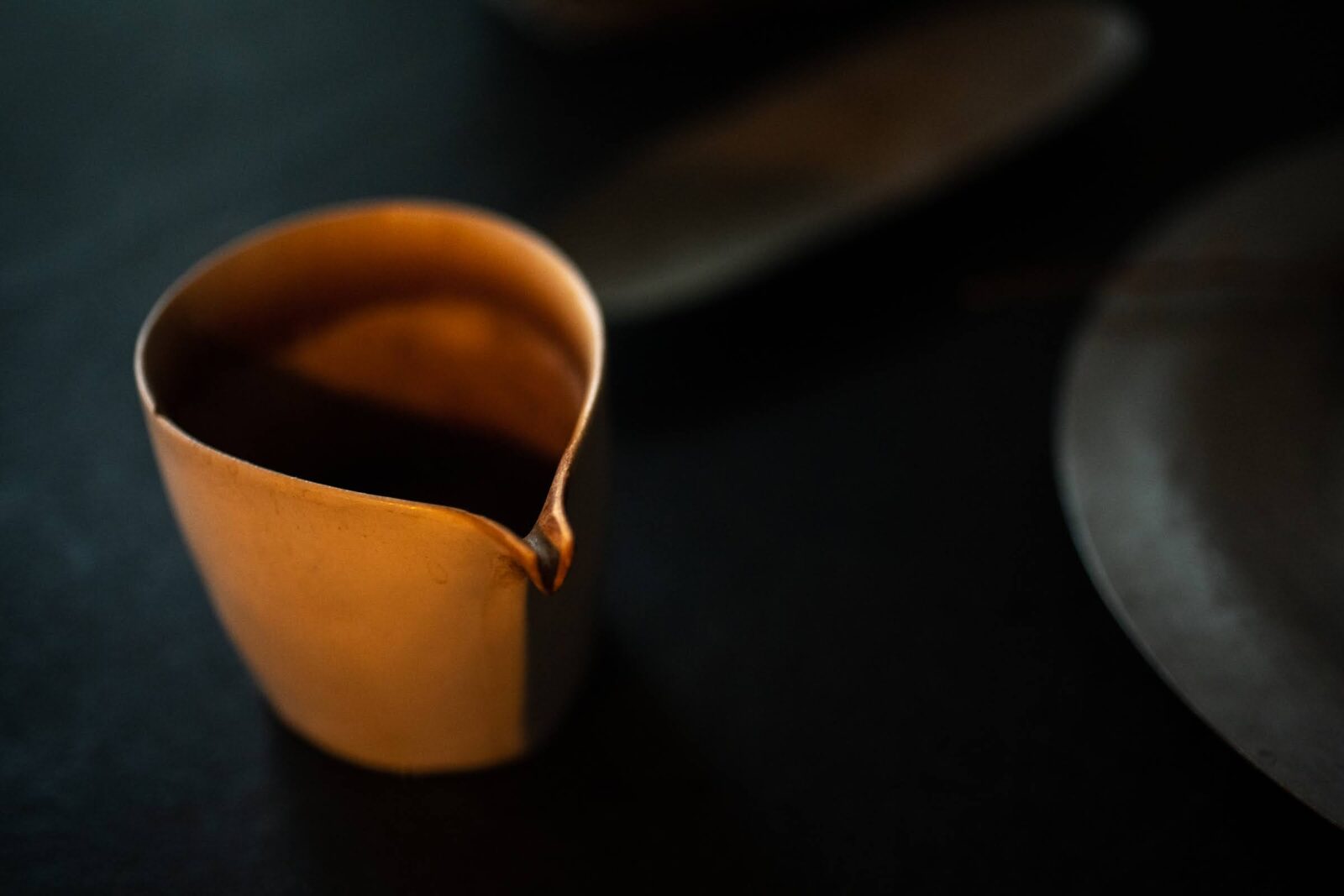
“In the past, I preferred aged ceramics so I used antique Chinese and Japanese tea cups. However, it was a lot of work to boil tea in them to get rid of the old smells and get them adjusted for my tea. The tea cups made by Ando use glazes and clay that have been researched to create better tasting tea. My tea blends with it nicely from the start so naturally, I choose it over other pieces.”
Becoming “sustenance” for tea house patrons
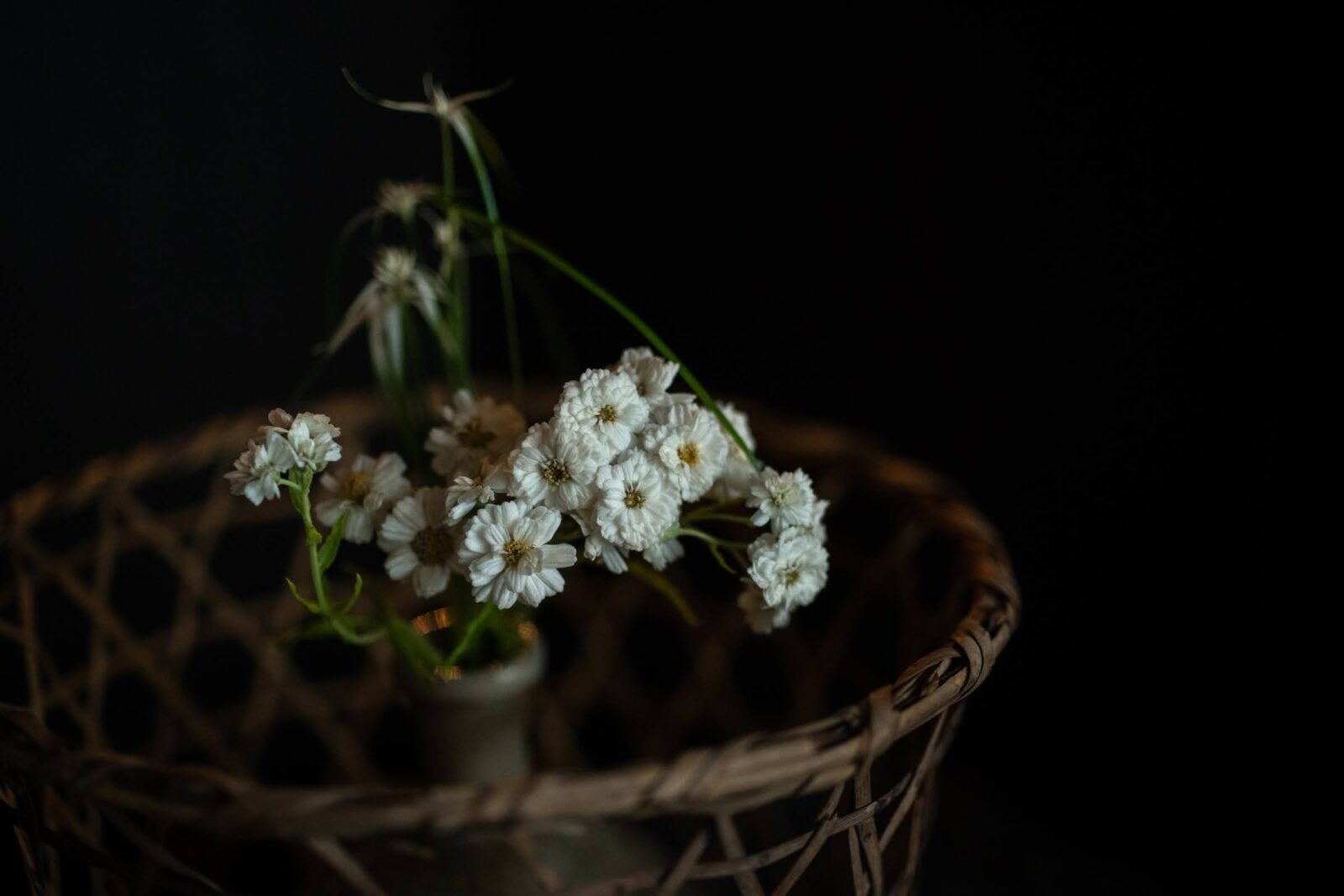
Mizoguchi enjoyed making sweets from a young age. She became so intrigued by spices that in middle school, she wished she could change her last name to her schoolmate’s name Hakkaku (star anise), a Chinese spice.
She later studied cooking, and the sweets she serves in her tea house cannot be defined as Japanese or Western style sweets. Her unique ryoka creations represent the four seasons and ingredients she uses.
In fact, the idea for creating the name ryoka was also inspired by Ando.
“Ever since I can remember, I have been cooking with red beans. It was very natural for me to integrate red beans into my creations, but I never imagined that nerikiri and daifuku (traditional japanese sweets and red bean rice cakes) were the only sweets recognized as wagashi (japanese sweets) by the general public.”
“When I was first starting out, I promoted my creations as a ‘five dish wagashi course’, but received feedback such as, ‘Isn’t five dishes of wagashi dishes like nerikiri too much sweets?”’ I then realized there was a gap between the public idea and my understanding of wagashi, and I started to struggle with identifying my creations as wagashi.”
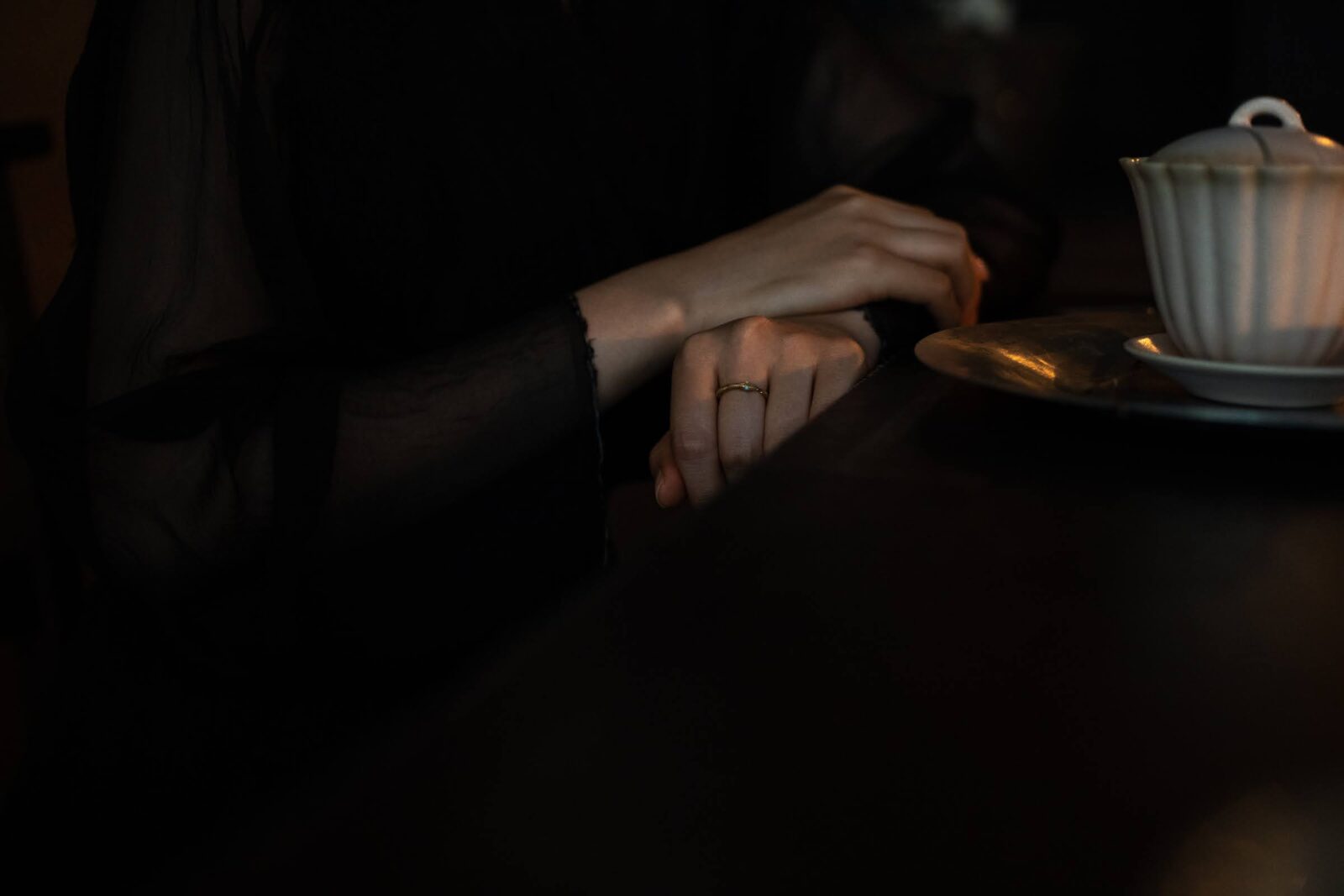
The term wagashi started being used to differentiate Japanese sweets with Western sweets in the Meiji Period when western sweets were introduced to Japan. Until then, it can be said that all the sweets available in Japan were wagashi.
“When I first met Ando, I served him the sweets I made. He said to me, ‘This is beyond the scope of wagashi.’ It was my thoughts exactly.”
“But then Ando went on to say, ‘There is no need to be disappointed by that. Why don’t you just create a new word to define your creations?’ He suggested I call it ryoka. Rather than limiting myself to the definitions of wagashi, this new term made sense to me as it took away the boundaries between culinary and confectionary creations.”
Not having to be sweet and being free to use any kind of ingredients, the freedom of ryoka allowed Mizoguchi’s craft to really take off.
“Before, I never really thought about the size of my creations because I was just doing what I was comfortable with. However, the Japanese character for ‘ryo’ can also mean a way of measuring size, and I tend to keep my creations about the same size. Ando also pointed this out to me and helped me realize this fact.”
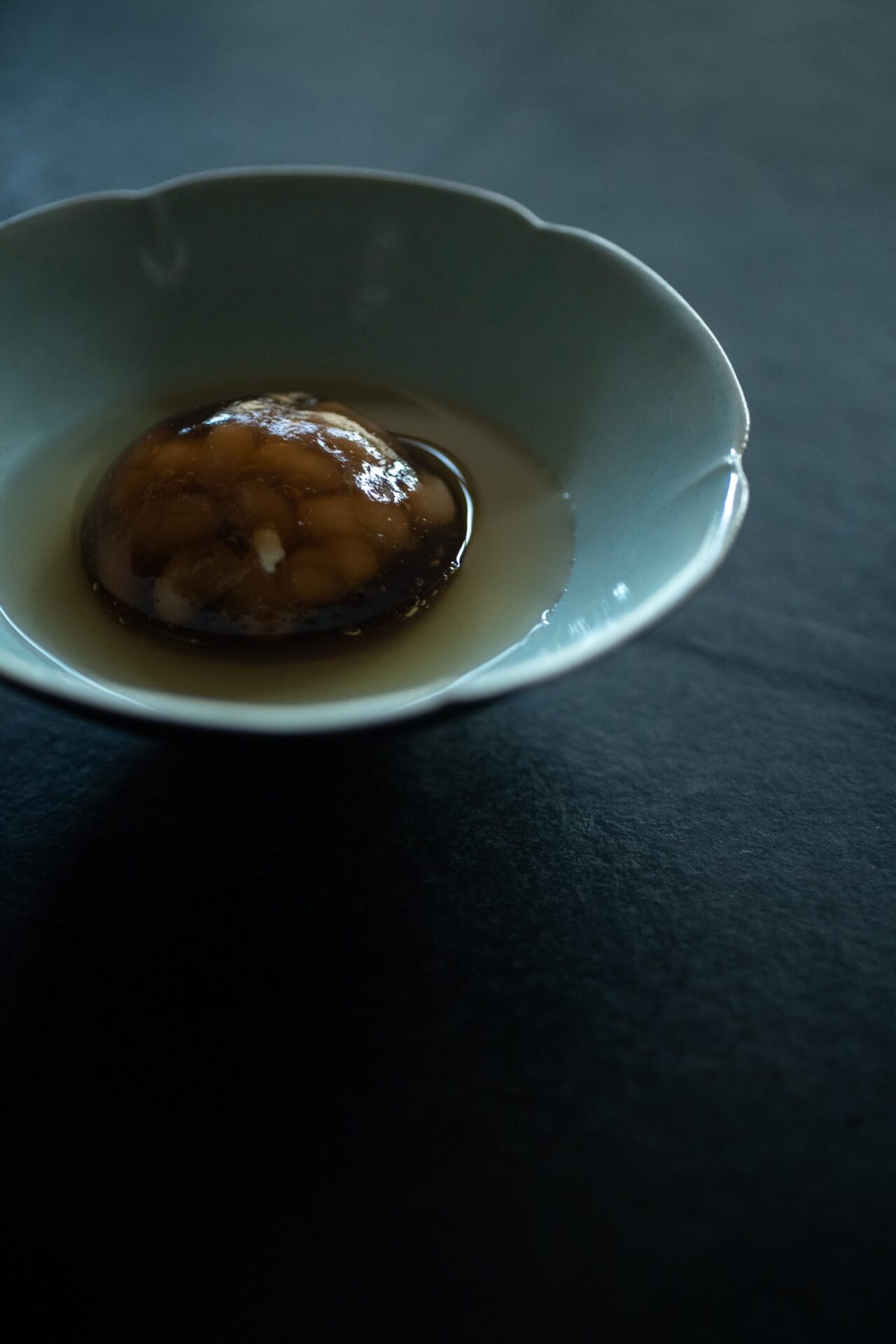
The ryoka for the day was aged white beans cooked in lemongrass.
“White beans are becoming harder to produce every year due to global warming, and a producer once asked me for advice. He has a ‘muro’ (storage room) on his property, so even though I am an amatuer in production, I suggested harvesting the beans early and letting them mature in the muro. He tried it immediately, and it turned out to create delicious beans.”
The dish was made with those white beans cooked in lemongrass wrapped with lotus root starch from Taiwan, which created a plump and chewy texture. The lotus root cake floated in soup made with cardamom leaves, lemon myrtle, cinnamon, ginger, black pepper, island peppers, and a slice of ripe plum, and had a thick, syrupy consistency.
The moist texture of the steamed white beans came to life and the dish finished off with a slight heat from the island peppers.
Her ryoka are born from her creative spirit and create a moment to savor nature’s richness with all five senses.
“The character for “ryo” is also pronounced “ka-te,” which means “to measure” in Japanese. My customers who have been coming to Kokonotu since it opened have tasted each season by coming here every month. I believe the raison d’etre of my shop is to encompass the seasons for the customers. If I can provide the ‘sustenance’ for that, it would make me very happy.”
Tasting the shifting flavors with each pot
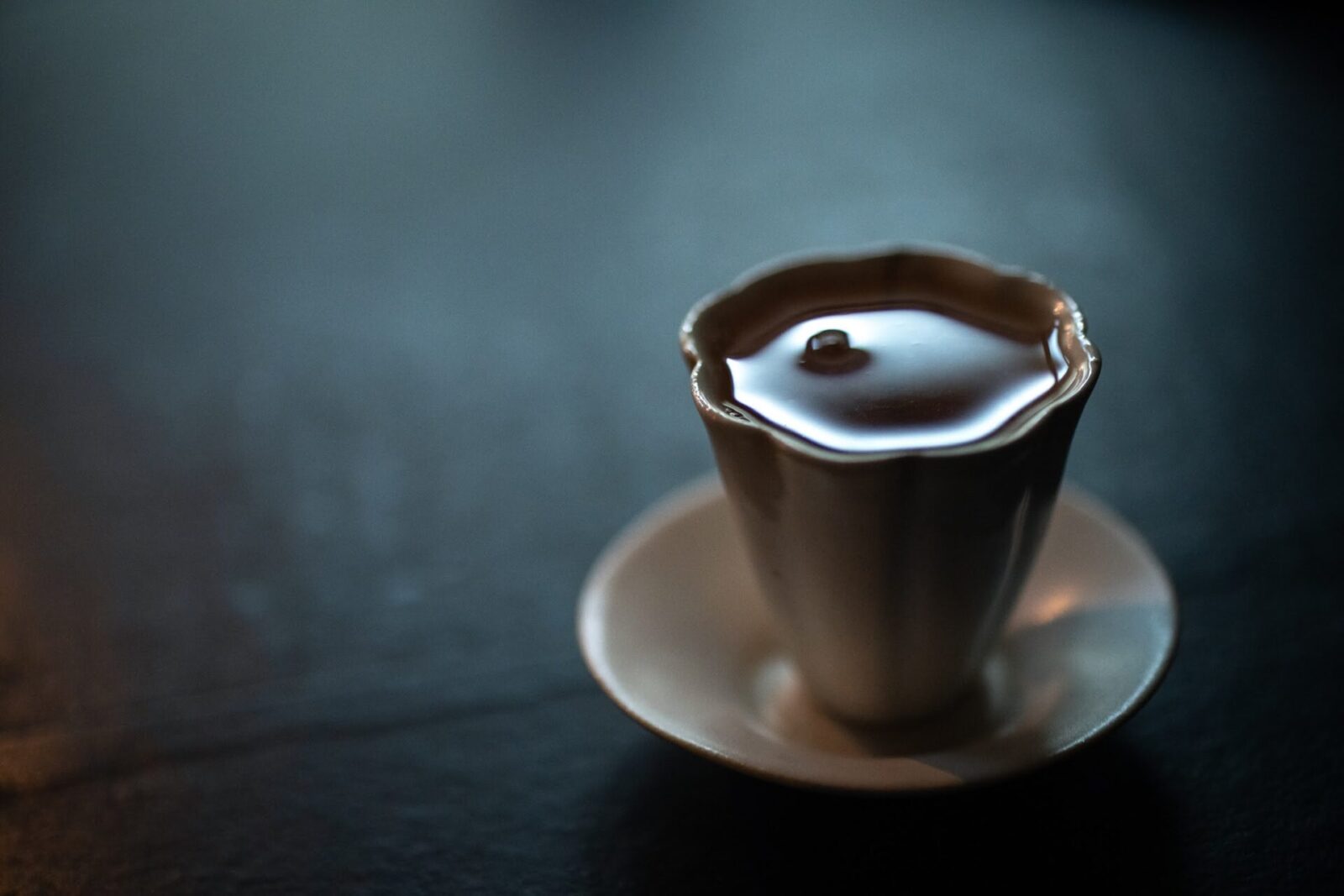
When we were served the second pot of Benifuuki, we found that the flavor had become significantly richer and it had a honey-like sweetness.
“It’s interesting because with weak teas, the flavor can be made stronger by steeping, but with strong teas like this one, you can enjoy it through multiple pots because it does not strain the tea leaves.”
The third pot was served with hot water at a higher temperature. This created a slightly thicker texture and we found ourselves relaxing and becoming more talkative. That is the tea experience Mizoguchi’s tea house creates.
“I am not usually one to talk a lot, but thanks to this tea house and talking about ryoka, I feel I can keep conversations going forever. It’s much like photography, which I also really love. When there is some kind of filter, I am able to show my inner self.”
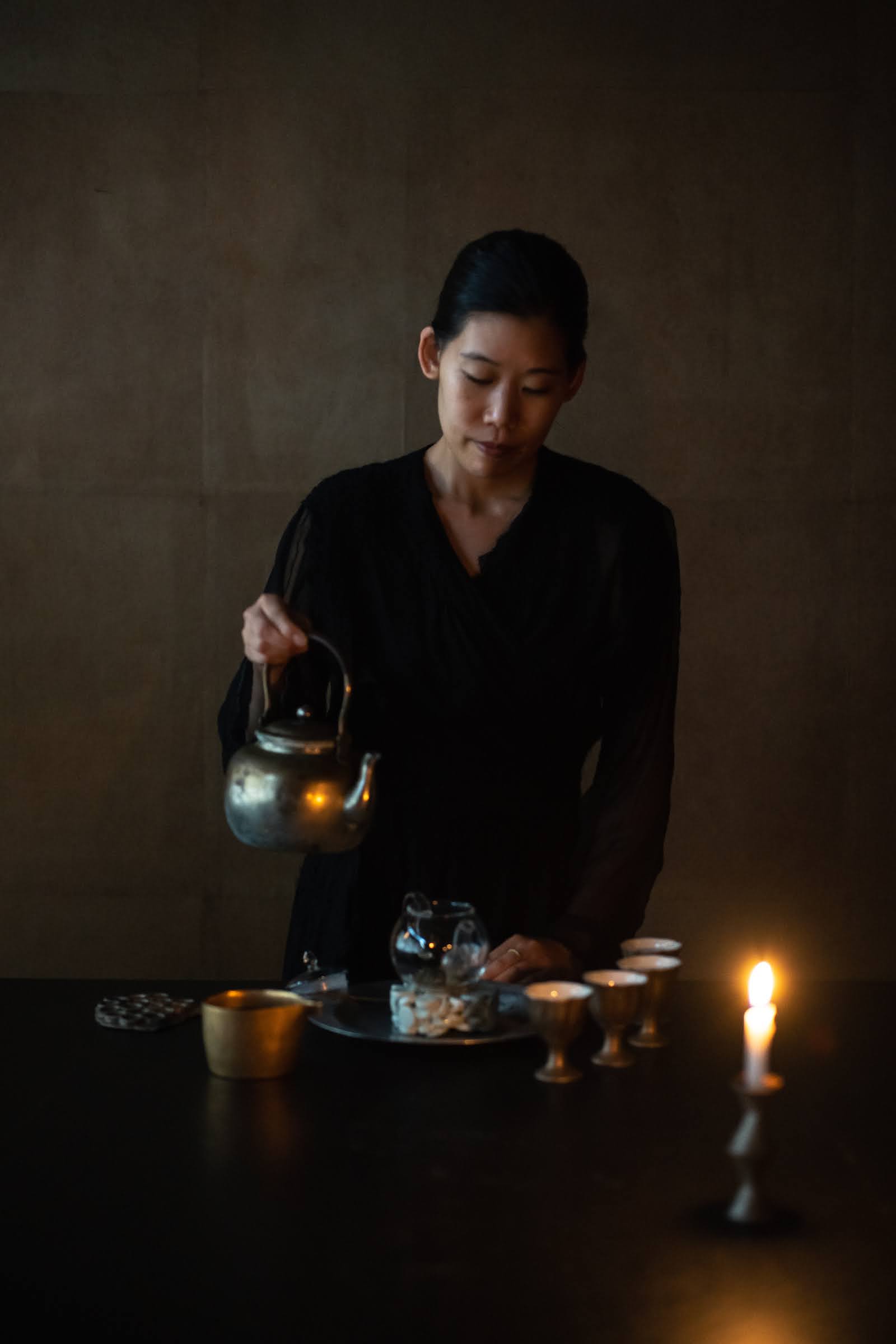
“I do enjoy serving the ryoka with just tea, but since I am a creator of sweets, I also like experimenting with different combinations.”
Mizoguchi served the fourth pot with her homemade plum syrup.
The plum syrup, made from ripe sour plums, was slightly pink and had a deep flavor with layers of rich sweetness and fruitiness. As it mixed with the tea, it created a moment that melted the hearts of those in the room.
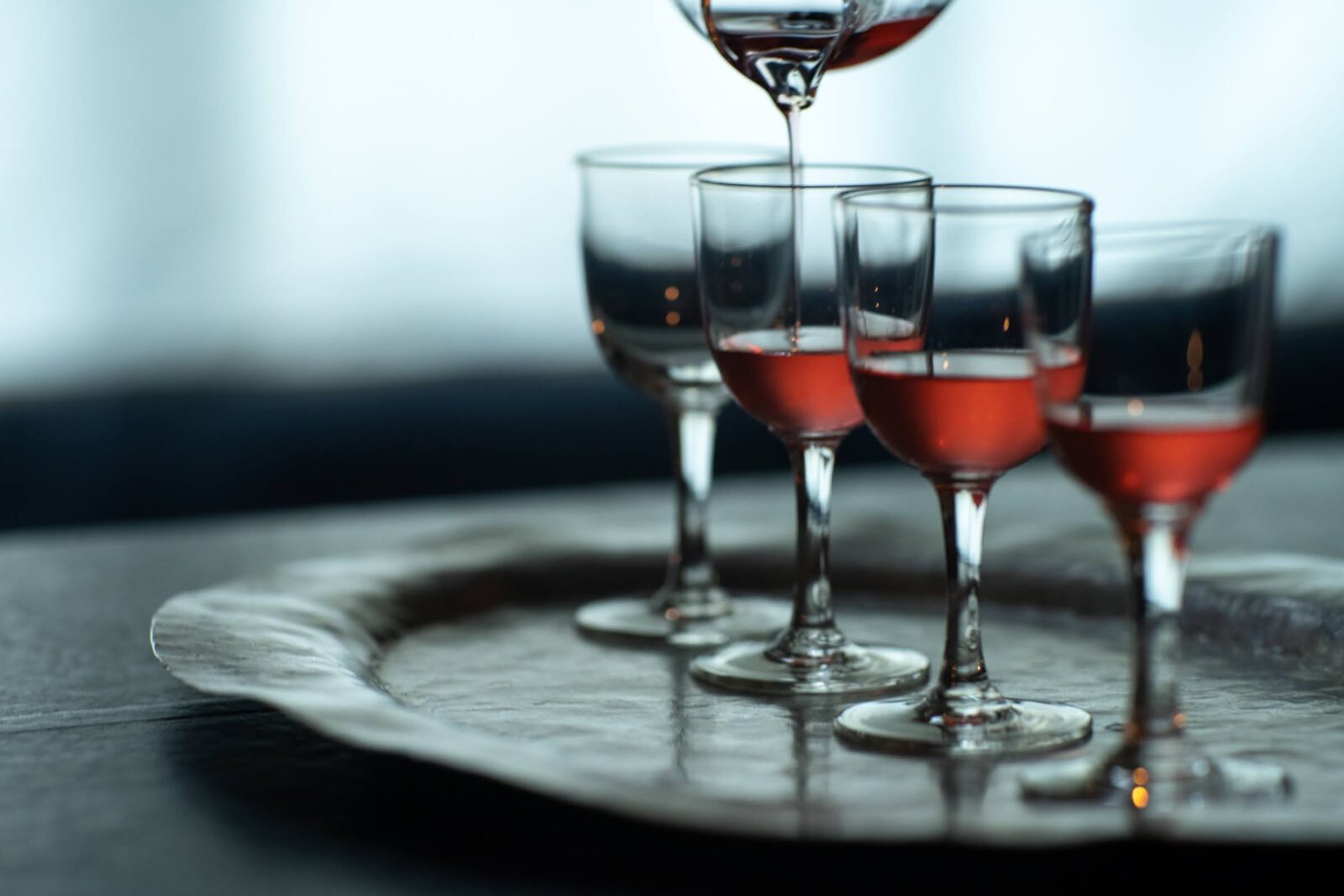

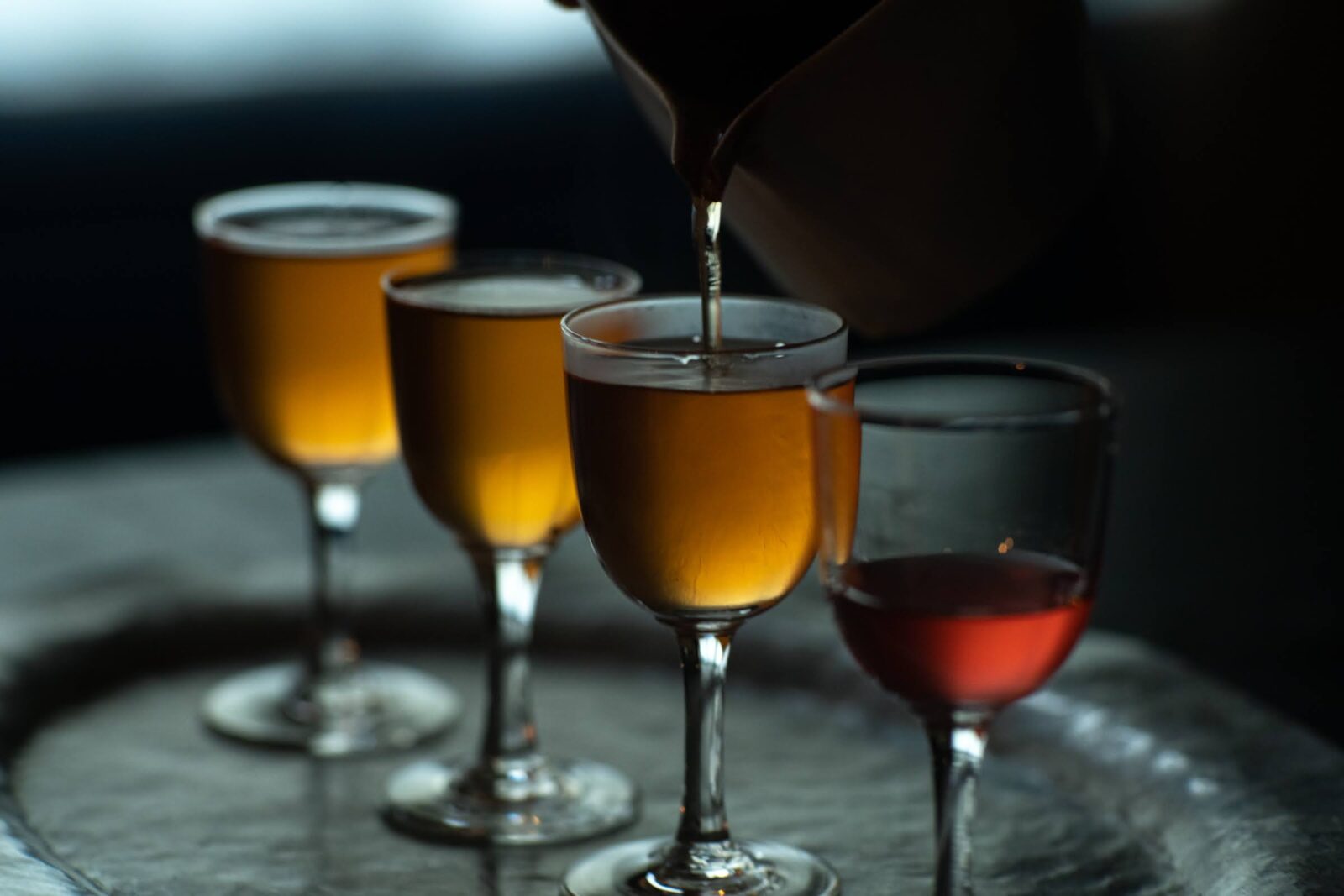
After finishing the fourth and final pot, we asked Mizoguchi what kind of moments melt her heart.
“Although I work in the culinary world, I don’t cook because I like to eat. Rather, it brings me joy when I see people enjoy my creations, or when food brings family and people together. Moments when I see people smile and be happy are the moments that melt my heart.”
“So although it seems as if I am entertaining everyone, in fact, it is a healing experience for myself. The tea house is open for about half of the month, but I feel more tired on my days off. I feel this place provides my heart ‘sustenance’ as well.”
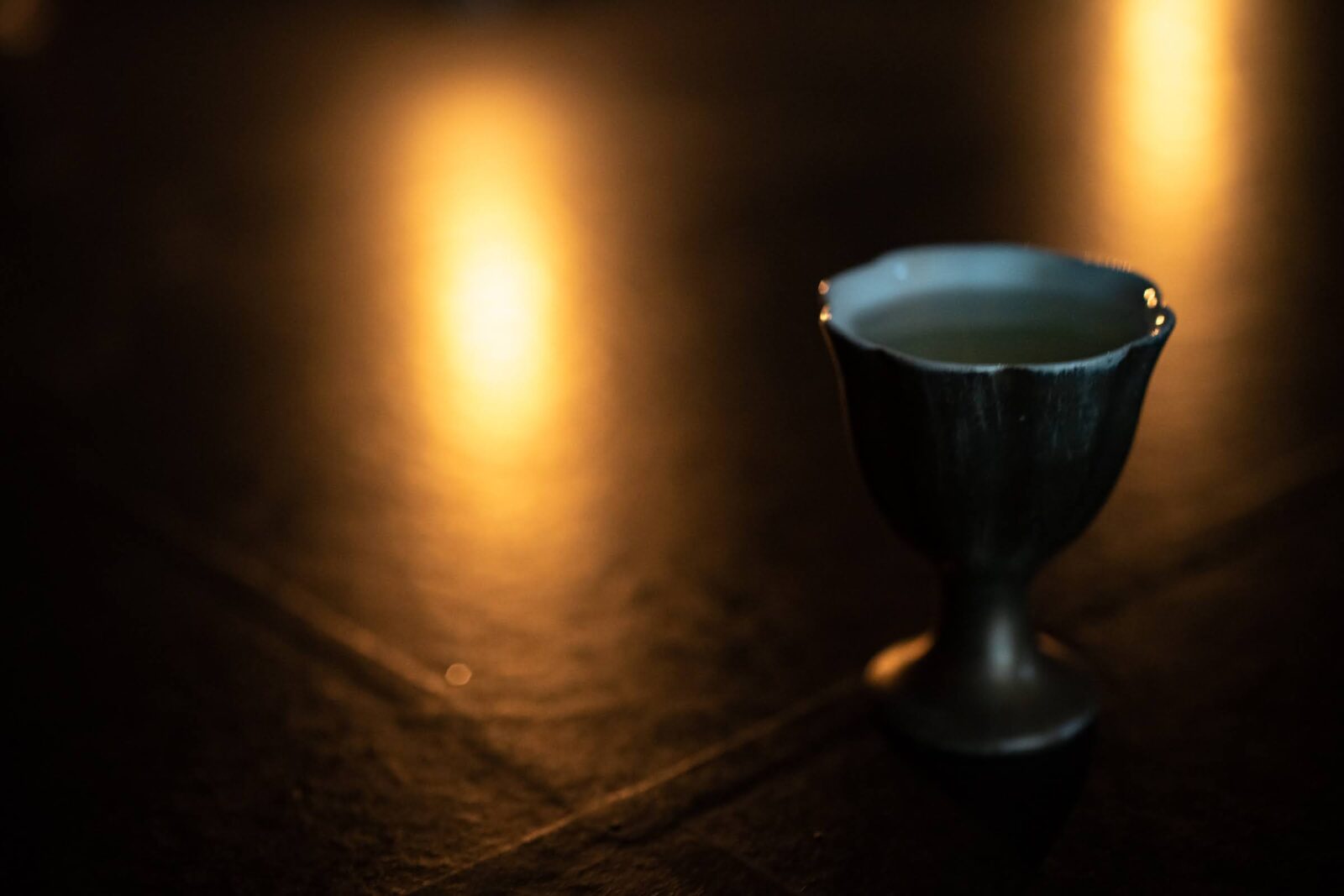
The second tea served that day was made from a herb, Holy Basil (Oya Tulsi), grown by a vegetable farmer in Ishigaki, Okinawa.
It has a very delicate color and is said to have many beneficial effects such as strengthening immunity and memory and reducing stress. There is a sensation of the tea flowing into all areas of your body when you drink it.
A tea house for enjoying the “art of time”
The light from the candle began to wither as it signified the end of the course.
We experienced complete bliss under this candle light for two hours.
At the end of the course, Mizoguchi explained that the experience she provides through tea and ryoka is a stage for the “art of time”
“In Tokyo, there are so many people who work very hard every day, and it’s hard to get by nowadays without working hard. Here, I want people to experience something extraordinary with all their senses, such as the scents as soon as they enter the tea house and the sensation of their eyes becoming accustomed to the dimness of the candle lit room.”
“The experience is only possible because you are here and eating. I call the experience“art of time” because it is born through your experience in the two hours of enjoying tea and ryoka.”
Photo: Kaori Nishida
Translation: Sophia Swanson
Editor and creator of the future through words. Former associate editor of Huffington Post Japan. Became independent after working for a publishing company and overseas news media. Assists in communications for corporates and various projects. Born in Gifu, loves cats.
